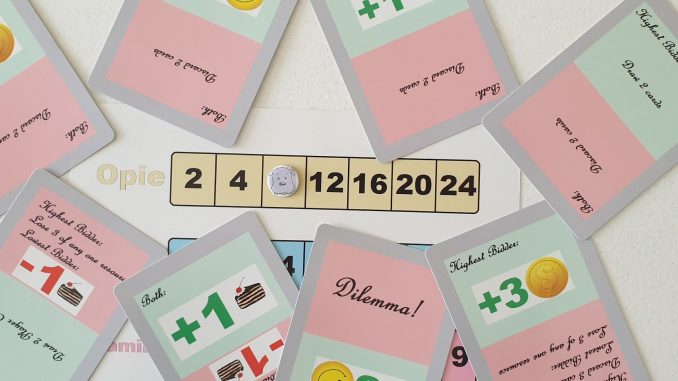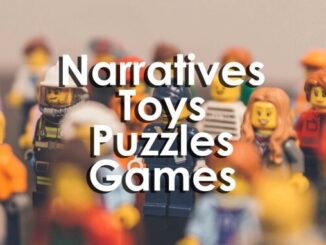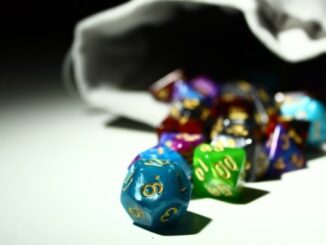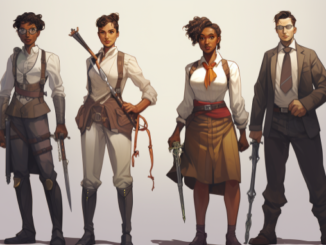
As we all know, gamification is often used as a way to encourage engagement. So why not use it to encourage another form of engagement? A literal engagement!
I was trying to think of a unique way to propose to my now fiancé. I’d spoken to several friends and family about their proposal stories and there was a recurring theme, a lavish holiday; an overpriced restaurant dinner, these things were nice, and memorable for sure, but I couldn’t help but feel that the bride-to-be could see it coming.
Every Christmas and birthday, I tried my absolute hardest to surprise my then girlfriend with something that I knew she really wanted, but had seemingly forgotten about, a tour of a famous film studio; an overpriced kitchen mixer; a French bulldog, but every time, she saw through my plan and knew what was coming. And an off-the-cuff trip to the small Italian village where she grew up would be no different. However, what if I planted seeds that eluded to an Italian proposal, all the while secretly working on the real surprise behind the scenes?
The real surprise was still a secret even to me. So, being a child of the millennial age, I sought advice from the internet. As you can imagine, there is no end to the number of unorthodox proposals that went viral, normally involving a dramatic public display or recruiting the help of many unknown strangers, the very thought of such a proposal gave me anxiety. However, there was one proposal unlike any other, a man recruiting the help of his friend who worked as a graphic designer to design and create a personalised board game. Instantly this felt right and my mind exploded with ideas.

My fiancé is Polish, so we celebrate Wigilia, which occurs on the 24th of December. I made the decision to propose on this day, which gave me exactly two months to design a personalised board game and have it made, not counting things such as delivery, playtesting; multiple drafts; even learning basic game design!
Now I’m somewhat creative, play a lot of board games, and had a ton of ideas coming to me, but I’m still a long way off from being a game designer. So, with the clock ticking, I completed a few online courses on game design, and embarked on my journey to design a board game.
At the time, I was playing a lot of resource gathering games and figured it would be a relatively simple theme to customise. I started by putting everything that would make the game personal into a spreadsheet, places we’ve been; things we’ve done; in jokes; TV shows; films; songs; future plans, and gave them each a positive and negative effect on resources, the resources being happiness, food, energy and money. The original (admittedly very primitive) concept contained three decks of cards, those that affected my player, those that affected my girlfriend, and ‘communal’ cards, which could be drawn by either of us and would affect whoever drew them. I want to go for a steak? Plus food, minus money. Kamila wants to go out to dinner? Plus happiness, minus money.

The first draft had us each starting in different areas of the board, with the aim being for us to meet up, become one unit and achieve certain things such as our first house, first car, first pets, which would mirror our real-life journey together. After a couple of playtests, the issues were clearly evident and numerous, turns were boring and repetitive; cards drawn didn’t always make sense before the players pair up; some resources ran out very quickly while others were in abundance, but that’s the point of playtesting!
I recorded the many issues in a Kanban board and tackled them one at a time, as this was a resource gathering game, my main priority was to fix resource balancing. I did a complete overhaul of all cards that affected resources, making sure they were more balanced e.g. ensuring that there weren’t 20 cards that provided more happiness and only 2 that removed happiness. Another change I wanted to make was to remove as much of the chance element as possible, leading to a more strategic game. At this point, the dice not only determined player movement but also accomplishing challenges which were integral to completing the game e.g. either myself or my girlfriend needed to obtain our first dog Opie by way of completing a challenge based on the roll of a dice. This was a lazy and boring mechanic that had to go. Around this time, I was playing a few board games that incorporated a mechanic whereby a player would have a winning stipulation unknown to the other players, a secret objective. This inspired me to alter a few of the personal references in my game and turn them into quests to be completed by myself and my girlfriend, as well as each player having a secret quest. This ended up making the most important part of the entire game as my secret quest was to propose to my girlfriend, an objective that was not built into the game, meaning that not only could I not win, but it also provided me with a way to organically pop the question after the game was over.

Now that the dice challenges were out of the game, I could work on removing the dice from the game entirely, I just needed a new movement mechanic, thankfully there are hundreds to choose from. The board at this point only had 7 locations, which were painstakingly narrowed down to from an original list of 17. I decided to go for a familiar aspect whereby each location is a tile and the board is assembled by 9 tiles, chosen randomly at the start of the game. Each tile has its own positive and negative impacts to resources, similar to the cards, and players move from tile to tile each turn, exploiting the resources on each tile. This way I could include all 17 locations and do away with those pesky dice!
As well as some other changes made, the game had been completely reimagined from the initial idea. Each player would now start and end their game separate from the other player i.e. they would not meet up and become one unit. However, I did still want a co-operative element. I achieved this by borrowing from another personal favourite from my board game collection whereby there is a common enemy that occasionally the players must join forces with one another in order to defeat. In our case the common enemy would be our first dog Opie. Opie would have his own track ranging from 2 to 24. Throughout the game, cards would be drawn that advance Opie along his track, when he reaches 24 or if a card is drawn stating “FEED OPIE IMMEDIATELY!”, the players must pool their food resources to meet the required number on Opie’s track. Depending on whether they succeed or fail, an Opie card is drawn providing either a reward or a forfeit for both players.

I also incorporated a series of Dilemma cards which referenced challenging times in our lives where the player would have to choose one of two options on how to resolve, either way it would benefit one player and negatively impact the other. The final piece of the puzzle was to organise the ever-growing plethora of cards into categories that would benefit the flow of the game. There were Buffs that could be traded between players and played to positively and negatively affect resources, Locations that allowed players to fast travel to non-parallel location tiles, Events that needed to be resolved immediately such as feeding Opie or resolving a Dilemma, and Artifacts which were either cards a player would need to complete a quest e.g. buy first car, or black forest cards (our favourite cake) which a player could save up and trade in 5 at a time to obtain an additional black forest token, which had become the way to track how many actions a player can make each round.
On the 24th of December 2018 myself and my girlfriend traded one Christmas present as was our tradition. The gift I gave was this game. Just by looking through the contents of the box my girlfriend was already in tears, and she didn’t even know the best bit! As planned, my girlfriend won the game and was already ecstatic. I said “Well done, I only had one quest left to complete…” I passed her the card that read “Propose to Kamila” while I pulled the ring box from my pocket, she looked up, saw the ring and burst into tears, as did I. Best present ever.

- Happy Ever After - 16th July 2020





Thanks so much for this Story, Dan. Not only is a great happy ending story in its own right, but it’s a masterclass in how to learn and implement games design techniques.